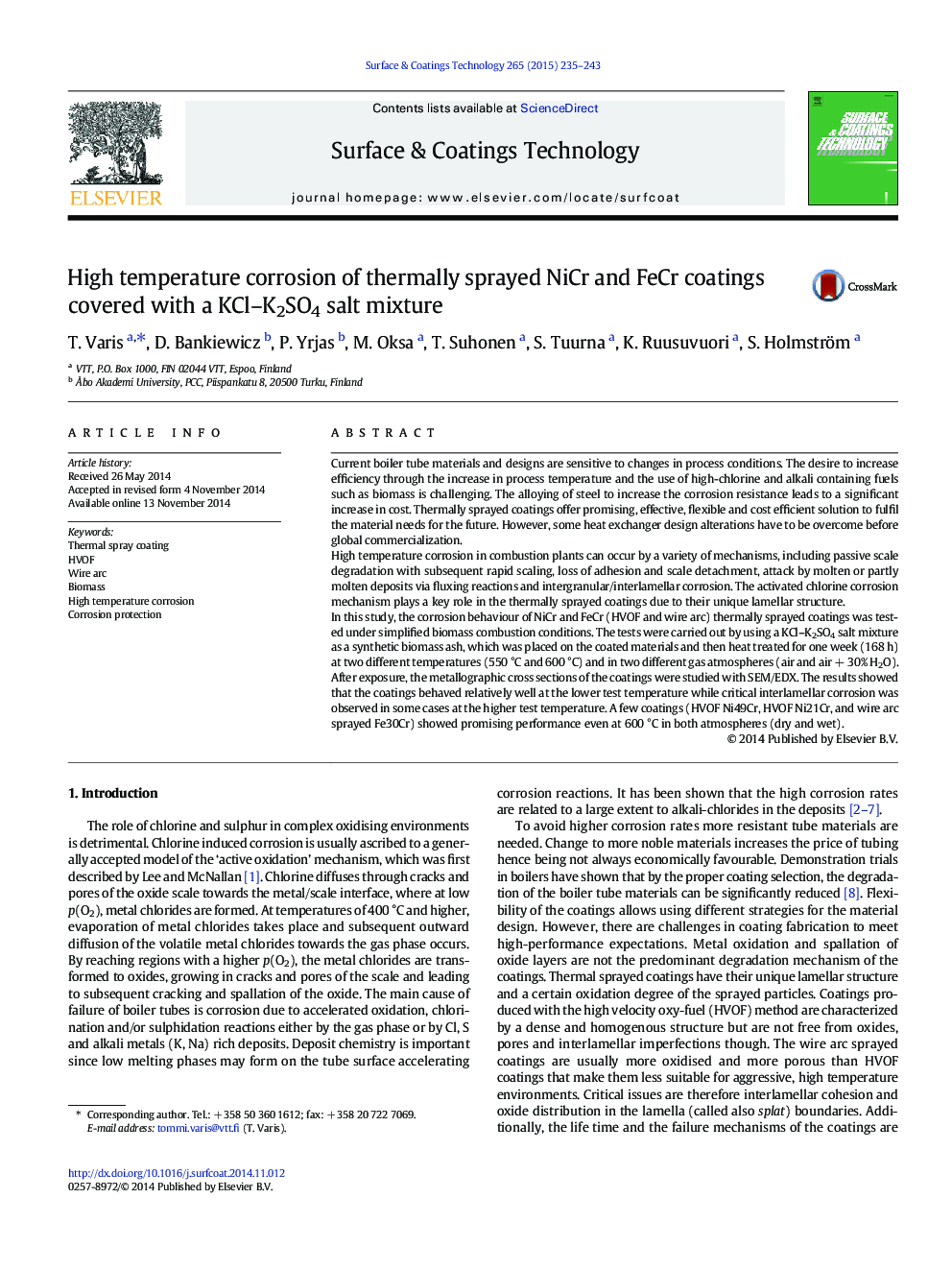| کد مقاله | کد نشریه | سال انتشار | مقاله انگلیسی | نسخه تمام متن |
|---|---|---|---|---|
| 1657144 | 1517614 | 2015 | 9 صفحه PDF | دانلود رایگان |

• The corrosion resistance of nickel- and ferrous base coatings was evaluated.
• Chlorine corrosion mechanism was different in humid and dry environment.
• Corrosion resistance was affected by alloy composition and thermal spray process.
• At 600 °C only few materials were protective while at 550 °C many.
• Ferrous base high chromium amorphous coatings showed most promising resistance.
Current boiler tube materials and designs are sensitive to changes in process conditions. The desire to increase efficiency through the increase in process temperature and the use of high-chlorine and alkali containing fuels such as biomass is challenging. The alloying of steel to increase the corrosion resistance leads to a significant increase in cost. Thermally sprayed coatings offer promising, effective, flexible and cost efficient solution to fulfil the material needs for the future. However, some heat exchanger design alterations have to be overcome before global commercialization.High temperature corrosion in combustion plants can occur by a variety of mechanisms, including passive scale degradation with subsequent rapid scaling, loss of adhesion and scale detachment, attack by molten or partly molten deposits via fluxing reactions and intergranular/interlamellar corrosion. The activated chlorine corrosion mechanism plays a key role in the thermally sprayed coatings due to their unique lamellar structure.In this study, the corrosion behaviour of NiCr and FeCr (HVOF and wire arc) thermally sprayed coatings was tested under simplified biomass combustion conditions. The tests were carried out by using a KCl–K2SO4 salt mixture as a synthetic biomass ash, which was placed on the coated materials and then heat treated for one week (168 h) at two different temperatures (550 °C and 600 °C) and in two different gas atmospheres (air and air + 30% H2O). After exposure, the metallographic cross sections of the coatings were studied with SEM/EDX. The results showed that the coatings behaved relatively well at the lower test temperature while critical interlamellar corrosion was observed in some cases at the higher test temperature. A few coatings (HVOF Ni49Cr, HVOF Ni21Cr, and wire arc sprayed Fe30Cr) showed promising performance even at 600 °C in both atmospheres (dry and wet).
Journal: Surface and Coatings Technology - Volume 265, 15 March 2015, Pages 235–243